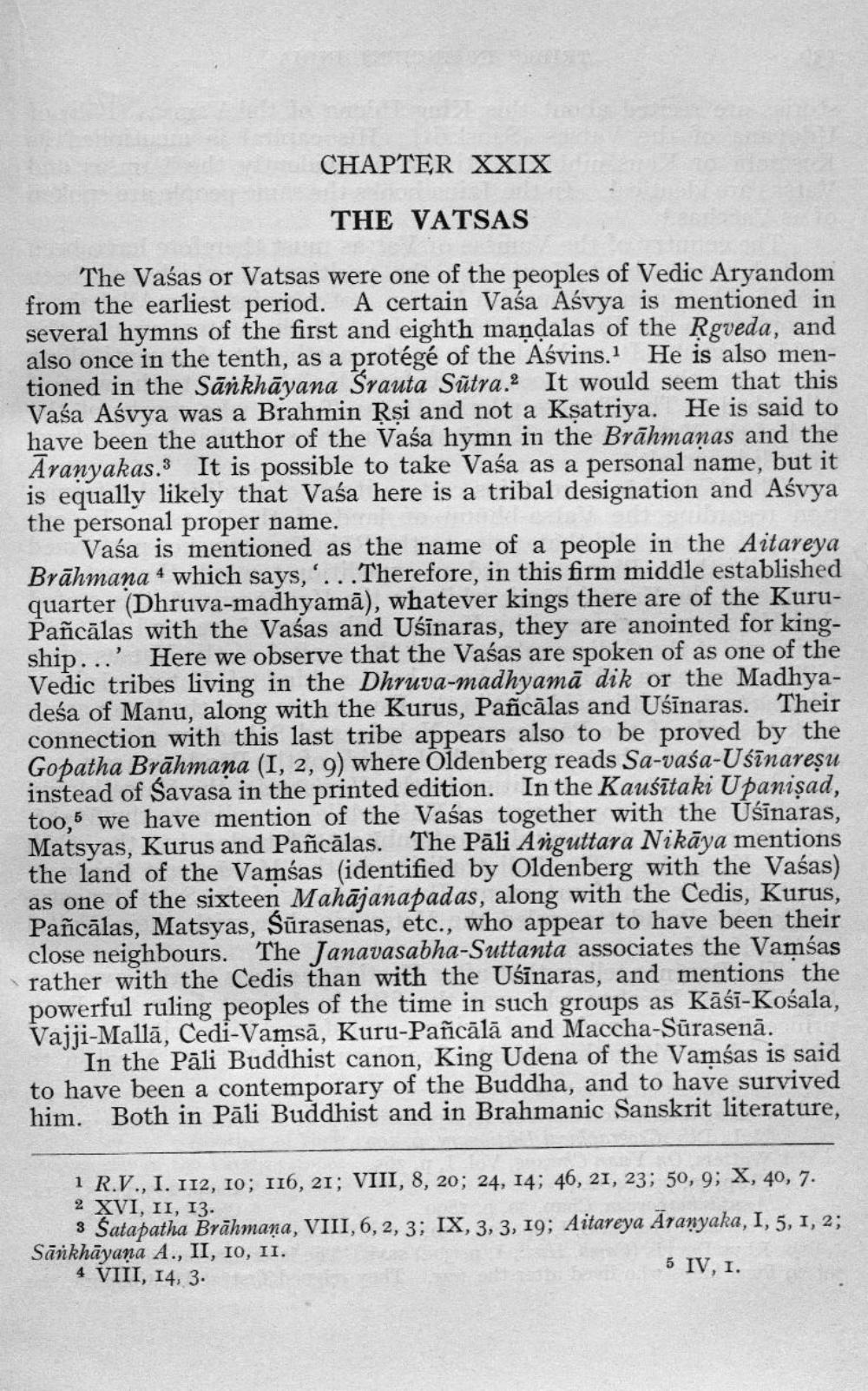________________
CHAPTER XXIX
THE VATSAS
The Vaśas or Vatsas were one of the peoples of Vedic Aryandom from the earliest period. A certain Vaśa Aśvya is mentioned in several hymns of the first and eighth mandalas of the Rgveda, and also once in the tenth, as a protégé of the Asvins. He is also mentioned in the Sankhāyana Srauta Sūtra.2 It would seem that this Vaša Aśvya was a Brahmin Rși and not a Ksatriya. He is said to have been the author of the Vaša hymn in the Brāhmanas and the Aranyakas. It is possible to take Vaśa as a personal name, but it is equally likely that Vaśa here is a tribal designation and Aśvya the personal proper name.
Vaša is mentioned as the name of a people in the Aitareya Brāhmana 4 which says,'...Therefore, in this firm middle established quarter (Dhruva-madhyamā), whatever kings there are of the KuruPañcālas with the Vaśas and Uśīnaras, they are anointed for kingship...' Here we observe that the Vaśas are spoken of as one of the Vedic tribes living in the Dhruva-madhyamā dik or the Madhyadeśa of Manu, along with the Kurus, Pañcālas and Uśīnaras. Their connection with this last tribe appears also to be proved by the Gopatha Brāhmana (I, 2, 9) where Oldenberg reads Sa-vasa-Ušīnaresu instead of Savasa in the printed edition. In the Kauśītaki Upanisad, too,5 we have mention of the Vaśas together with the Uśīnaras, Matsyas, Kurus and Pañoälas. The Pali Anguttara Nikaya mentions the land of the Vamsas (identified by Oldenberg with the Vaśas) as one of the sixteen Mahājanapadas, along with the Cedis, Kurus, Pañcā
tsyas, Sūrasenas, etc., who appear to have been their close neighbours. The Tanavasabha-Suttanta associates the Vamsas rather with the Cedis than with the Uśīnaras, and mentions the powerful ruling peoples of the time in such groups as Kāśi-Košala, Vajji-Mallā, Cedi-Vamsā, Kuru-Pañcālā and Maccha-Sūrasenā.
In the Pāli Buddhist canon, King Udena of the Vamsas is said to have been a contemporary of the Buddha, and to have survived him. Both in Pāli Buddhist and in Brahmanic Sanskrit literature,
1 R.V., I. 112, 10; 116, 21; VIII, 8, 20; 24, 14; 46, 21, 23; 50,9; X, 40, 7. 2 XVI, II, 13.
3 Šatapatha Brāhmaṇa, VIII, 6, 2, 3; IX, 3, 3, 19; Aitareya Aranyaka, 1, 5, 1, 2; Sankhāyana A., II, 10, II. 4 VIII, 14, 3.
5 IV, 1.




